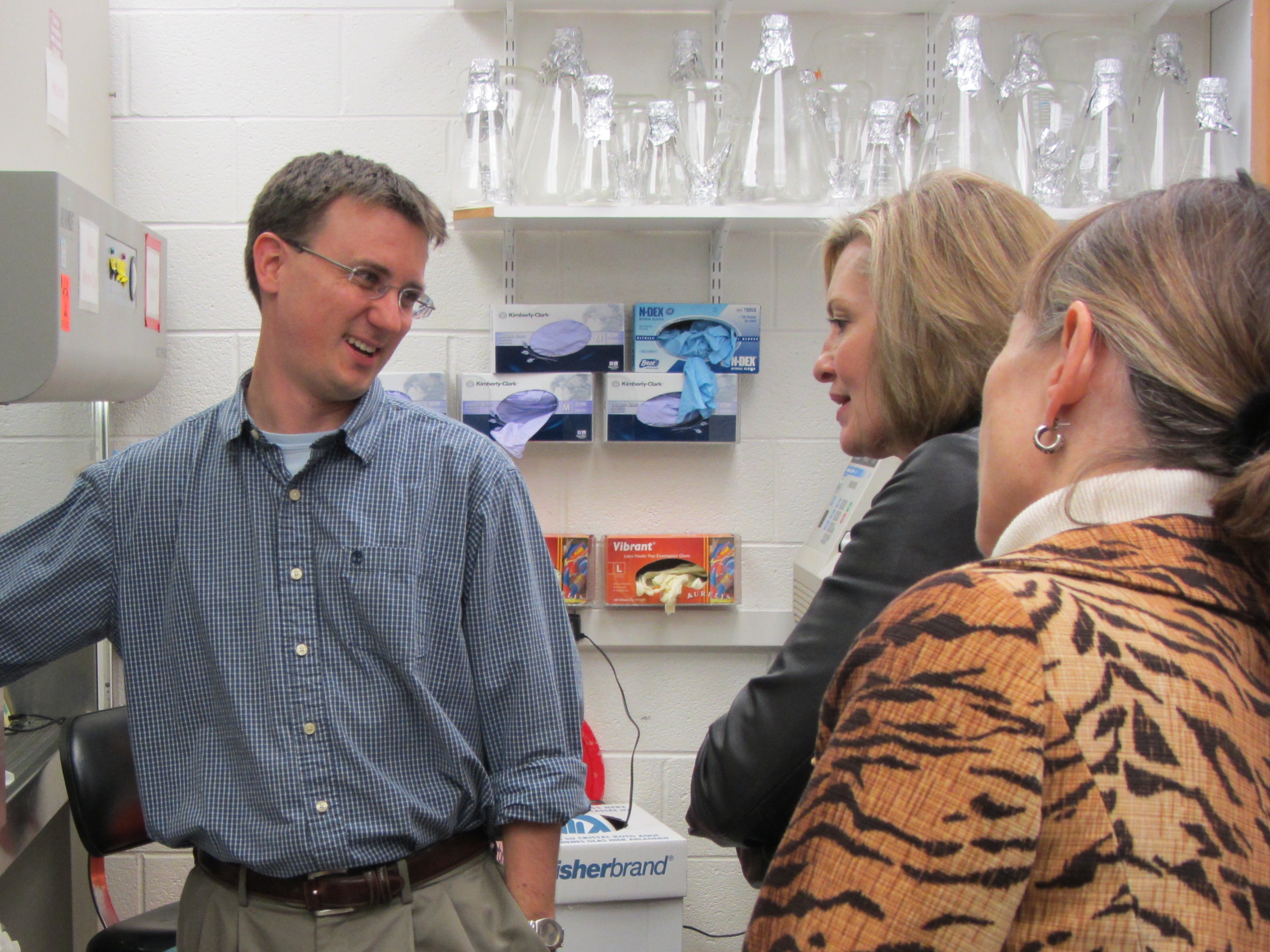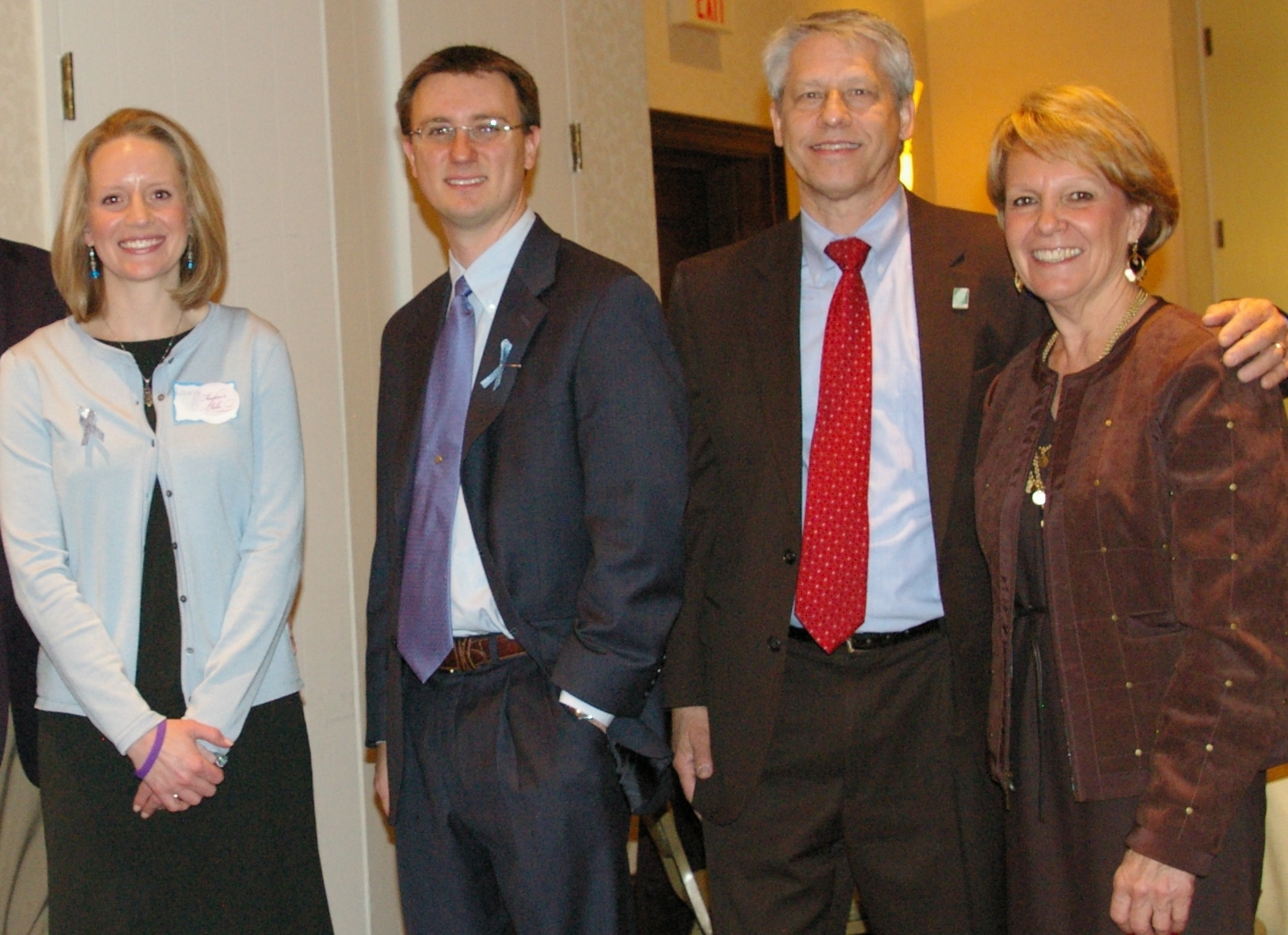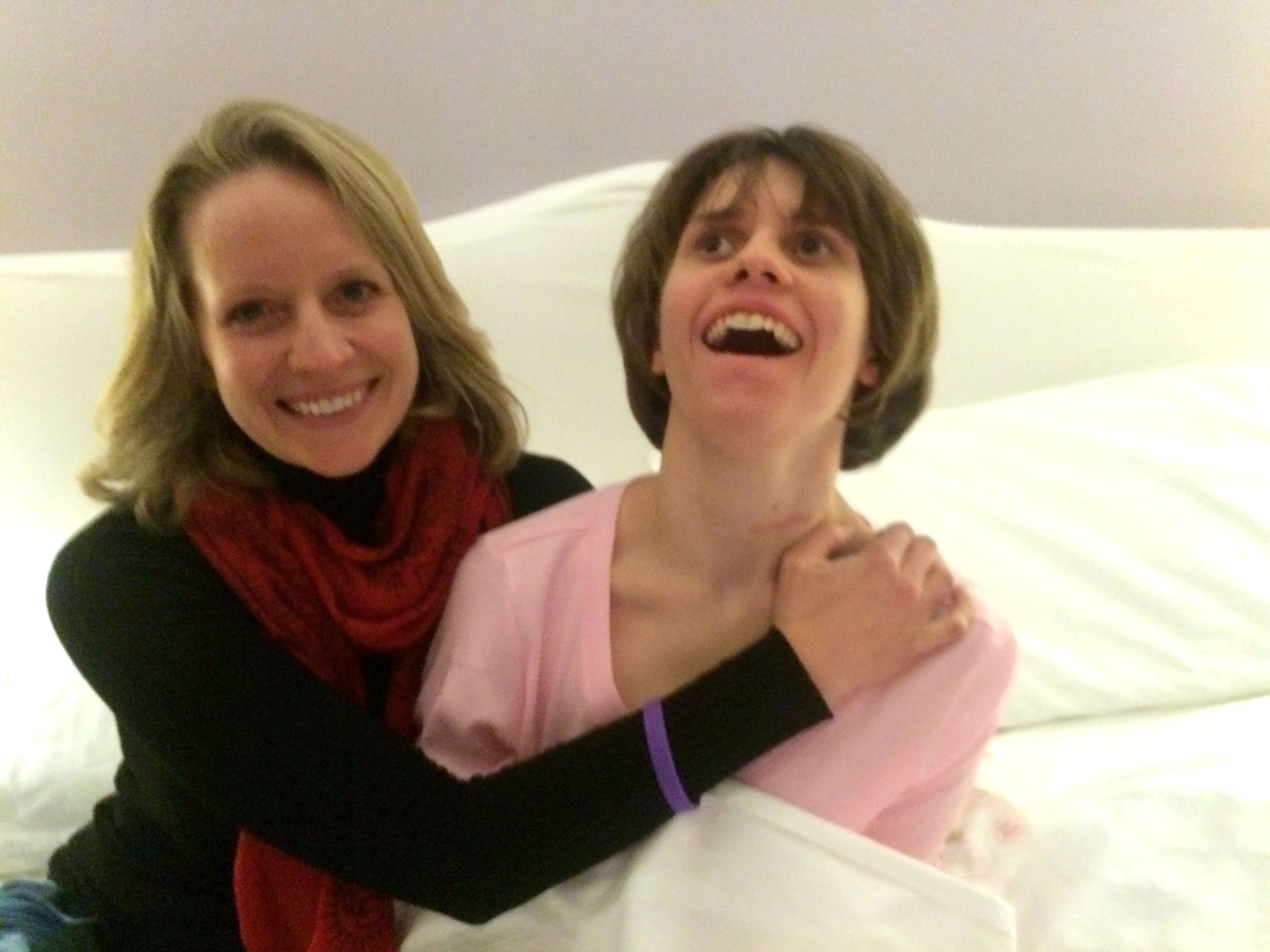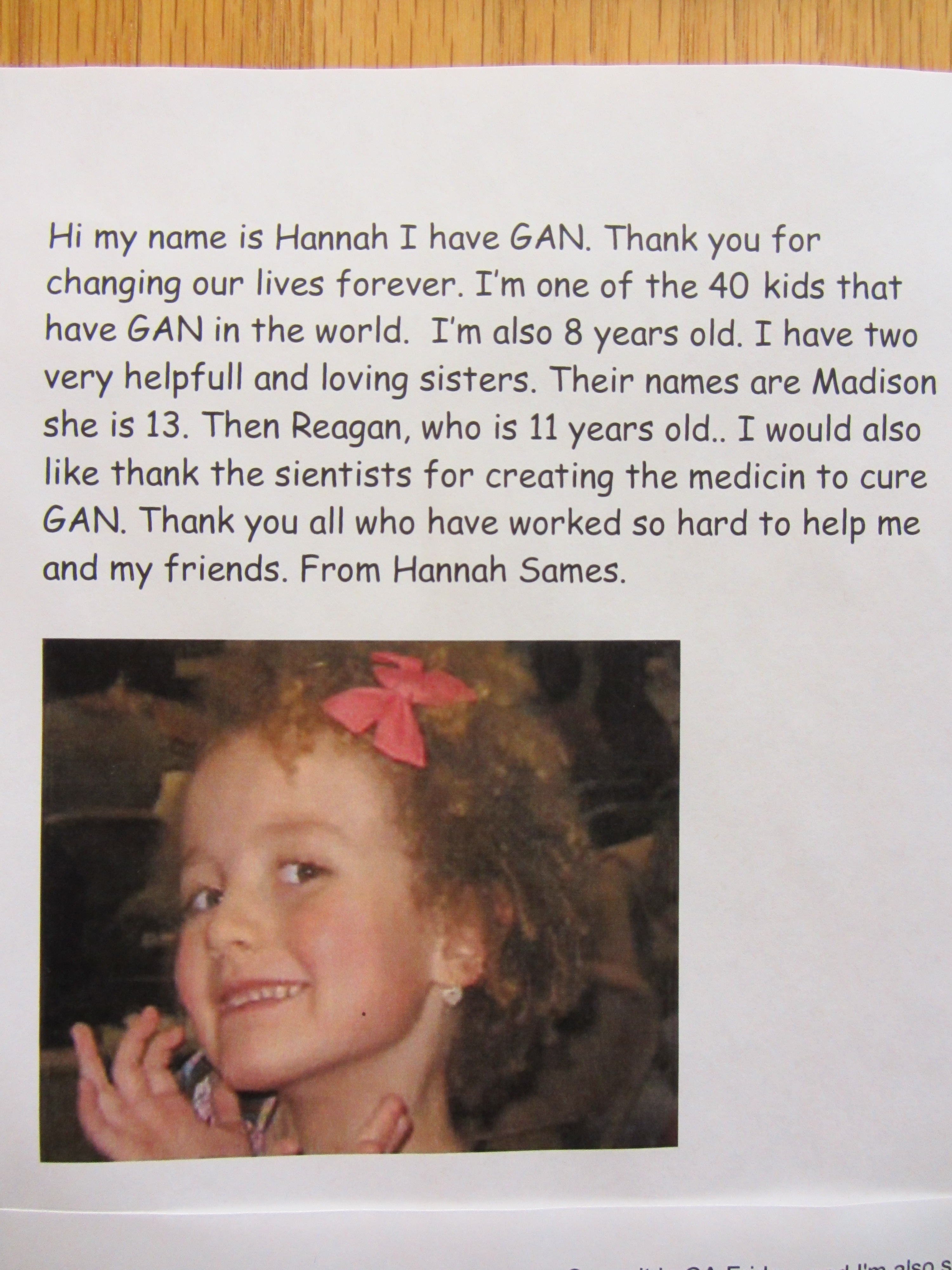Nearly five years ago, when my sister could still sing and talk and walk and eat ice cream cones on hot summer days, my mother met Steve Gray, a young investigator from the University of North Carolina Gene Therapy Center, at a conference in Bethesda. Since 2008 he’d been working on giant axonal neuropathy (GAN), an ultra-rare, fatal childhood disease that causes progressive nerve death.
A few months later, we drove to Greensboro to have dinner with him. We weren’t ready to take the leap then, but Mom believed in Steve since the first time she heard him speak about his effort to save children from a monster that turned them into quadriplegics unable to eat or breathe on their own. When I sat across from Steve in our booth that night, I believed in him, too.
Our only mistake was that we didn’t fund Steve more quickly; it took Taylor’s Tale a whole year to sign on as co-funders of a project modeled after the GAN work, announced on World Rare Disease Day in February 2013.
In doing so we followed in the footsteps of Hannah’s Hope Fund, founded by Lori and Matt Sames in honor of their daughter, Hannah. Like my mother, Lori Sames entered the fight against GAN with no medical background. But Lori traveled the world, speaking to PhDs and MDs and biotech executives and raising millions of dollars in hopes of saving Hannah and kids like her.
On Friday, the first-ever clinical trial for GAN began recruiting participants.
Clinical trials happen all the time. But this one, for a little-known yet devastating disease that affects fewer than 100 children in the world, would never have happened without the dogged determination of Hannah’s family, who raised $6.5 million from their kitchen in upstate New York. It wouldn’t have happened without the genius and iron will of Steve Gray, who took an idea and turned it into a treatment in 6.5 years (in case you don’t know, this is like light speed in the world of science, particularly for an ultra-rare disease like GAN).
I won’t forget the night Lori Sames flew to Charlotte to speak to the Taylor’s Tale board, or the day I took a long lunch to watch the webcast of my mother speaking on behalf of Hannah’s Hope Fund at the National Institutes of Health. That day, the Recombinant DNA Advisory Committee (RAC) granted approval for the GAN trial preparations to continue – a vital step in ensuring a better future for children with GAN.
I don’t think a rare disease has ever met a tougher match than Lori Sames or my mom. As I shared on my blog the day the RAC committee said yes, Lori and my mom each looked their child’s rare disease in the face and said, “You will NOT defeat me. I will NOT sit back and let you take my child without a fight.” And because of the choices they’ve made, there is a light at the end of their respective tunnels.
You will NOT defeat me. I will NOT sit back and let you take my child without a fight.
But rare diseases are cruel, and though the GAN trial has the green light, it doesn’t have a place for Hannah – at least not yet. The 10-year-old with squiggly hair and a sweet smile is ineligible for the trial she inspired because of her specific genetic mutation.
Our situation is different from the Sames’, but in a way, I understand. We’ve poured everything into finding a treatment for infantile Batten disease since Taylor was diagnosed in 2006. I know Taylor’s Tale is a big reason why we are far closer to an answer today than we were then. But Taylor’s light is fading, and I’ve had to come to terms with the fact that the work we’re doing is for future Taylors.
So today, I try to focus on the good moments I’m able to steal with my sister. She can’t talk to me any longer, but sometimes I can make her laugh.
In the meantime, I remind myself that we’ve got the very best working to build a better tomorrow for kids like my sister.
Hannah and Taylor are in their minds when they’re in the lab, and I think that’s part of what drives them to be so good at what they do. I’ll never forget the first time I visited Steve’s lab at UNC. Photos of sick children decorate his office door. He told me that seeing the faces of those kids motivates him.
And though I understand now that we’re probably too late to save my sister, I still believe in this: that one day soon, because people like Steve Gray were motivated by the faces of kids on their office doors, kids like Hannah and Taylor won’t die young.




